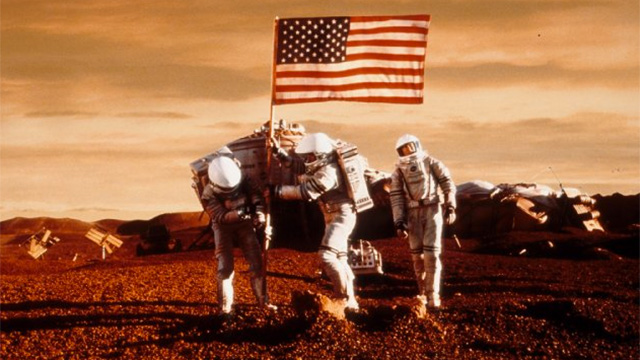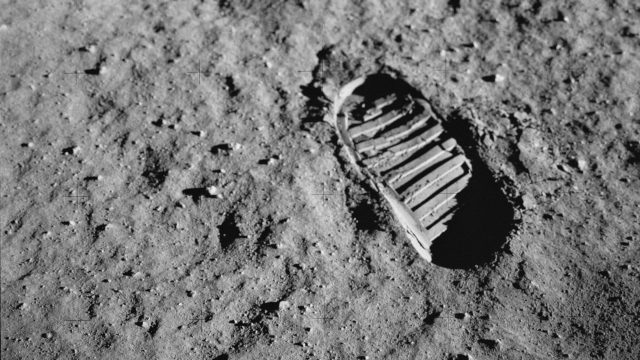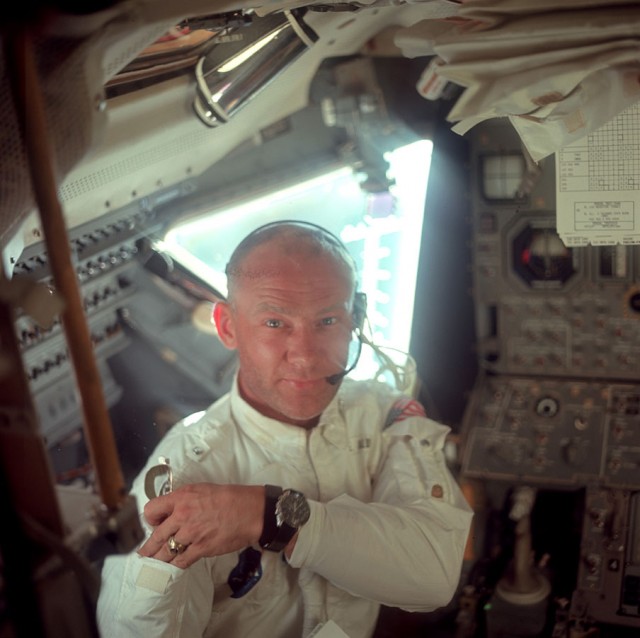
Wanted: Applicants for one-way trip to Mars. Will provide training, supplies, spaceship. Must be OK with being on television. No return option. Survival possible, but not guaranteed.
That's an abbreviated version of the pitch Mars One has made, and more than 30,000 people read it and applied for the chance to be permanent Mars residents. It's not my cup of tea—even if the mission were a guaranteed success, I like my comfy life too much to give it up for a chance to live out my days like Dr. Manhattan on the red planet—but the space mission/reality TV show has attracted some passionate followers.
Ars writer Casey Johnston spoke with one of the Mars One applicants, Aaron Hamm (who also is also a member of the Ars OpenForum under the username "Quisquis"), who genuinely believes in the mission of Mars One. Hamm and many other applicants see the chance to live out their lives on Mars as not only a worthwhile step in humankind's exploration of the universe, but also as the fulfillment of a personal dream.

However, the Mars One mission has also attracted more than its share of skepticism (and sometimes outright mockery). Those who are doing the mocking seem to think it's self-evident that Mars One will at best fall apart prior to even launching a mission and at worst spectacularly kill four people live on television. The doubters can't comprehend the faithful, and the misunderstanding goes both ways: the faithful seem to be having trouble comprehending the doubters, too.
"I'm kind of curious what the public is expecting to see at this point," wrote Hamm in a comment to the previously linked Ars story. "Everyone panning the program seems to expect that they should be able to see blueprints and budgets or something." He continued:
Even if Mars One executes exactly as they plan to, no one who isn't intimately involved in the project is going to see that level of detail.
And I think everyone should take a moment to remember that 10 years before we landed on the Moon, we couldn't even launch a rocket into space...
I wrote a pretty lengthy response comment, which one of the staff pinned as an editor's choice comment. On reflection, it's worth holding that reaction up to a critical lens: am I just a hopeless doubter, shouting down every non-NASA idea with loud cries of "NO, IT CAN'T BE DONE" without having an appropriately open mind? Or is skepticism at this stage justified?
Ten years before the moon
Ten years prior to Apollo 11's landing, NASA was a fledgling agency, having just barely taken over the United States space launch efforts from its defunct predecessor, the National Advisory Committee for Aeronautics. No human being had yet left the Earth, and none would do so for almost two more years. At that point, the idea of putting a human being on another world wasn't really in the national consciousness; the US government was more concerned about the Soviet Union's ability to lob intercontinental ballistic missiles into the middle of the United States—or overfly US territory from orbit with impunity.
Ten years later, in the culmination of the greatest engineering effort in the history of the human race, two humans spent a bit over 21 hours on the lunar surface and actually walked around outside their spacecraft for two hours and thirty-six minutes. The running budget of Project Apollo from 1960 to 1969 was $16,130,420,000, so it could be said that every second of that two hours and thirty-six minutes carried an effective cost of about $1,700,000.

Some of the skepticism about Mars One is going to be good old-fashioned Internet truculence, no matter what. Mars One could announce that its plan is to confirm the existence of Mars by pointing a telescope at it and taking pictures and there would still be some number of Internet commenters who would say "THIS IS SO FAKE." However, our perception of space travel has been colored by past successes. At its height, Project Apollo and its associated programs directly or indirectly employed about 400,000 people and consumed 2.2 percent of the total federal budget. If it took that many billions to get twelve people to the moon, how many more will it take to get to Mars?

Mars One's estimate of a $6 billion price tag seems ludicrously low in light of what other government-funded space agencies across the world have spent to accomplish far smaller goals. Mars One's costs will be lower than a government-run mission for a variety of reasons, not the least of which is the notoriously porky nature of manned space flight (that army of 400,000 civil servants and contractors spread across North America didn't come cheap). Hamm points out that Buzz Aldrin himself favors a Mars mission and that the aging moonwalker notes that "very little new science" would be required to make the trip (this is demonstrably true, since NASA has been planning a Mars mission with various types of technology, including Apollo-era rockets and spacecraft, for decades).
But $6 billion still seems a little light.
The right stuff?
The Mars One technology page lays out in broad strokes the vehicles and technology organizers plan to use to reach and explore Mars. The group anticipates saving huge amounts of money by getting spacecraft, people, and supplies up to space as payload on the SpaceX-built Falcon Heavy launch vehicles, which should, if all goes according to plan, be built to NASA's human-rating guidelines and should therefore be "safe" for transporting people in addition to cargo. These plans are obviously predicated on Falcon Heavy being brought into operation on time.
By using Dragon capsule variants in a variety of roles, Mars One also removes the need to design a spacecraft or a Mars landing vehicle, saving tremendous amounts of money... possibly. One issue is that there's no acceptable method yet to actually land people on Mars. Parachutes simply don't work—Mars' atmosphere is too thin. The bouncy-ball airbag method used for Mars Pathfinder and the twin Spirit and Opportunity rovers doesn't scale well to living creatures. Curiosity's famous powered skycrane isn't a much of a candidate, either, because every ounce of fuel and skycrane mechanical bits added to the lander is an ounce that cannot be used instead for post-landing supplies for the four Mars One colonists.
A viable option would likely look something like the Apollo-era Lunar Module's powered descent, wherein the LM balanced itself atop its descent engine and decelerated its way down to the surface in a mostly automated fashion. Drastically more sophisticated computers and software would obviate many of the deadly challenges of the Apollo-style powered descent, but it's not nearly as simple as popping a parachute and drifting gently down to the ground.

Altogether, Mars One's $6 billion will need to cover multiple Falcon Heavy launches, multiple Dragon vehicles, and at least one Mars Transit vehicle to ferry the crew from Earth to Mars (which, at least so far, sounds like it will have to be designed from scratch). Also, Mars One will need to design and manufacture environmental suits (nothing in any existing space agency's inventory will work for them, as every "production" spacesuit in the world is currently geared for short-term microgravity extravehicular activity, not long-term planetary exploration), rovers, and all the other things listed on the its site. The company will be contracting out a lot of labor: "All equipment will be developed by third party suppliers and integrated in established facilities."
There's another factor that incites skepticism: with one exception, every human being who has walked on another world has been an extremely skilled test pilot or naval aviator (and the one exception, Dr. Harrison Schmidt, was trained and rated on supersonic jets after his acceptance to the astronaut corps). This kind of background made the astronauts not just adept at flying planes and lunar landers, but also powerfully sharp observers and communicators, able to process lots and lots of inputs simultaneously and make extremely quick and informed decisions in response to rapidly changing situations. Beyond being incredible pilots, most were also brilliant—Buzz Aldrin, for example, holds a PhD from MIT in astronautics and his thesis, "Line of Sight Guidance Techniques for Manned Orbital Rendezvous," formed the groundwork for much of NASA's rendezvous procedures during Project Gemini.

Every person NASA sent to plant those flags and make those footprints on the moon has been ridiculously qualified to do so, trained by the absolute best methods that could be devised by a battery of brilliant scientists and experts who had the use of effectively unlimited funds to research and conduct that training.
In contrast, Mars One is holding a popularity contest for random Internet applicants, and it wants to sell the TV rights to the training and mission. It doesn't conjure up images of bold exploration so much as it does broken dreams and farce.
The final countdown
Organizers' plans for mission sustainability—and, I'll of course grant that I don't know anything other than what has been publicly released, so maybe they've got a workaround for this—are contingent on other suppliers to provide almost everything material to the mission. Assuming they can vault the initial hurdle and actually set four souls down on Mars, those folks' survival depends on the very, very nascent commercial space industry to keep them from dying a slow death. Maybe that's what it will take to make commercial space travel viable, but I think it's going to come back to that oldest, truest adage of space flight: no bucks, no Buck Rogers.
Maybe I'm having such a hard time with it because it seems fantastic and silly, and in real life, fantastic and silly plans usually meet with harsh and unfunny ends; maybe the mention of "reality TV" automatically poisons my entire picture of the project. Maybe I'm just a pessimistic person with a dried-up soul and a hopelessly atrophied sense of wonder. I don't know. I do know that I can't help but see Mars One in comparison to the space race; by the time everything was said and done, the US spent more than $100 billion in adjusted 2010-era dollars to send the very best people it could find to the moon... and now we're going to canvas the Internet for folks who want to go die on Mars and make a TV show out of it.
It just seems like a ludicrous, impossible project. And not the good kind of impossible project that ends in the triumph of the human spirit overcoming the whatever blah, blah, blah—this seems like the bad kind of impossible project where people wind up dead. I wish Mars One and its applicants luck, but if they pull off even a single launch, I'll eat my hat.
reader comments
292